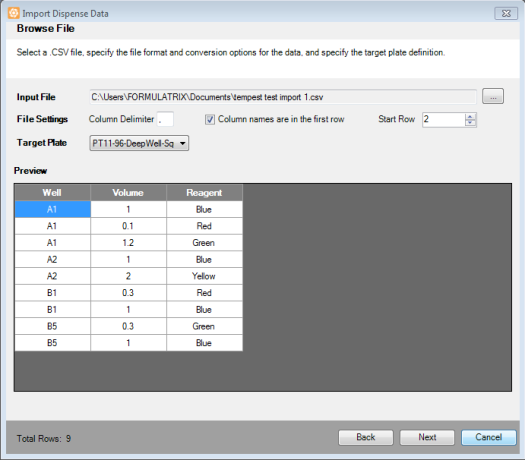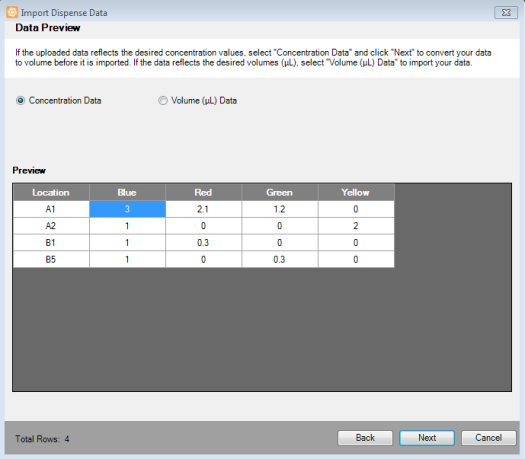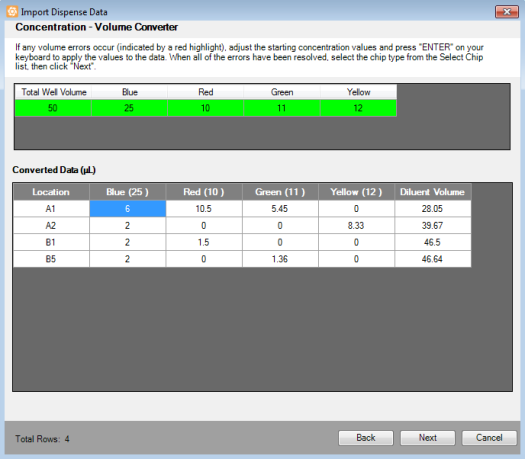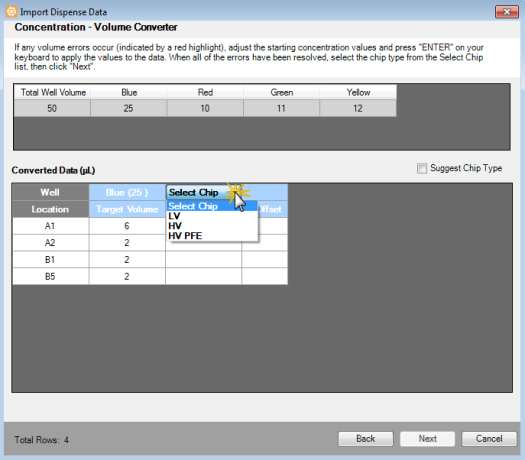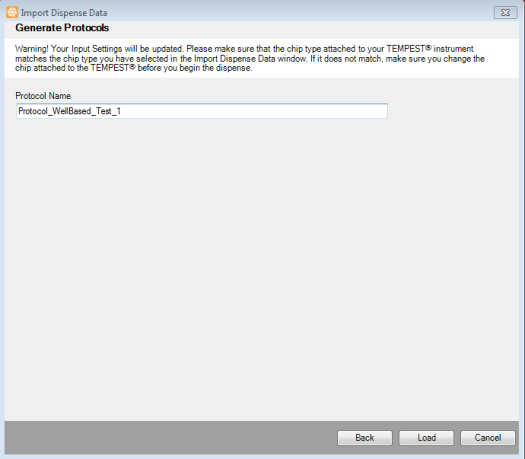-
Go to the File menu, and select Import Dispense Data on the Import Dispense Data menu.
-
Select Reagent Name Based and click Next.
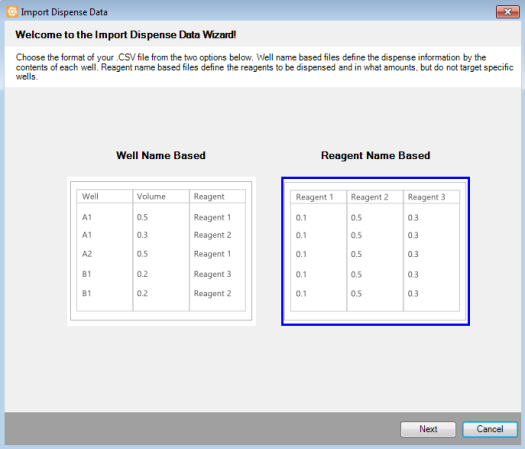
Selecting the Reagent Name Based File Format
-
Click the Browse button  next to the Input File box and locate the file you want to import.
next to the Input File box and locate the file you want to import.
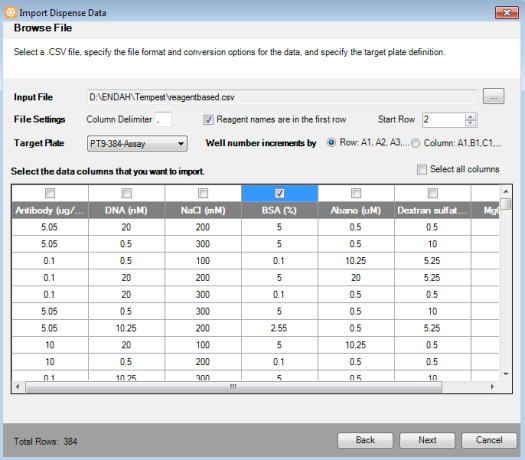
Modifying the File Settings
-
In the File Settings option:
-
The Column Delimiter determines the separator between values in the .CSV file. Type the separator used in your file.
-
If your reagent names are in the first row, select the Reagent names are in the first row box. If not, deselect the option.
-
Select or type the row number you want to start with in the Start Row box.
-
In the Target Plate option:
-
Select the plate type you want to use for dispense from the plate list.
-
Determine the well numbering convention by selecting either the Well number increments by Row: A1, A2, A3 or by Column A1, B1, C1 option.
-
Well increments by Row: A1, A2, A3 means that the wells in your plate design are numbered left-to-right in rows. For example, wells A1 through A12 are numbered 1 to 12 and are represented by the first 12 data rows of your .CSV file. Wells B1 through B12 are numbered 13 to 24 and so on.
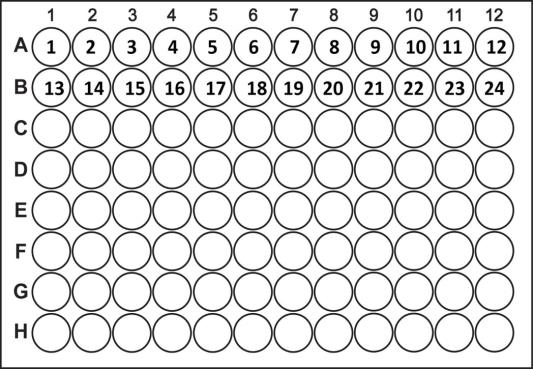
Well Number Incrementing by Row
-
Well increments by Column: A1, B1, C1 means the wells in your plate design are numbered top-to-bottom in columns. For example, wells A1 through H1 are numbered 1 to 8 and are represented by the first 8 data rows of your .CSV file. Wells the next column A2 through H2 are numbered 9 to 16 well, and so on.
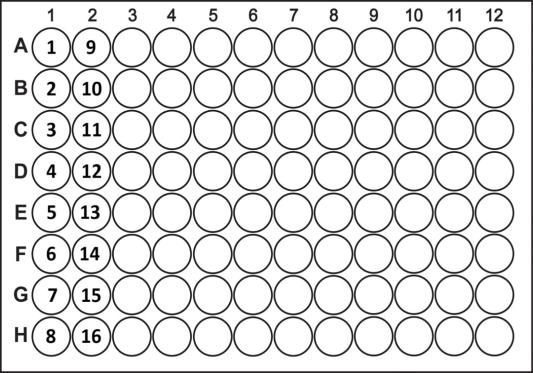
Well Number Incrementing by Column
-
OPTIONAL: To change your reagent's name, click on the reagent box and type a new reagent name.

Rename the Reagent
-
You can select one or several reagent data columns to be imported from the .CSV by checking the boxes above the columns in the table. To select all reagents at once, check the Select all columns box at the upper-right corner of the table. Click Next to proceed.
Note: You cannot proceed to the next step until you have selected one or several reagents in the Select data columns to be imported table. You can always go back to this table to modify your reagent selection if you haven’t closed the Import Dispense Data wizard.
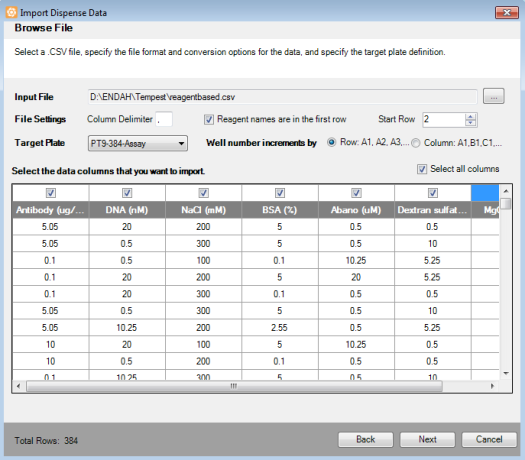
Selecting All Reagents at Once
-
Select from one of the options below:
-
Concentration Data: If your current data is a list of concentration values, select this option to convert it to volume, and then proceed to step 9.
-
Volume (μL) Data: If your current data is a list of volumes in μL, select this option and proceed to step 10.

Data Preview Options
-
Input the Total Well Volume (μL) and the stock concentration values of each reagent, then hit the Enter key on your keyboard to apply the values. The Converted Data table will display the updated volumes in microliters (μL). Click Next to select the chip type for your reagents.
Note: If one or more items in the converted data are highlighted in red, the stock concentration is not suitable for delivering one or more of the well volumes without overfilling the well(s). Adjust the stock concentration value and try again.

Concentration - Volume Converter
-
Click the Chip Type drop-down list and select the desired chip type (Low Volume and High Volume) that you want to use. The table columns to help you make an informed choice:
-
Target Volume: The result calculated by the concentration to volume converter.
-
Actual Volume: The actual volume that can be achieved with the selected chip.
-
% offset: The difference between the Target Volume and the Actual Volume, as a percentage.
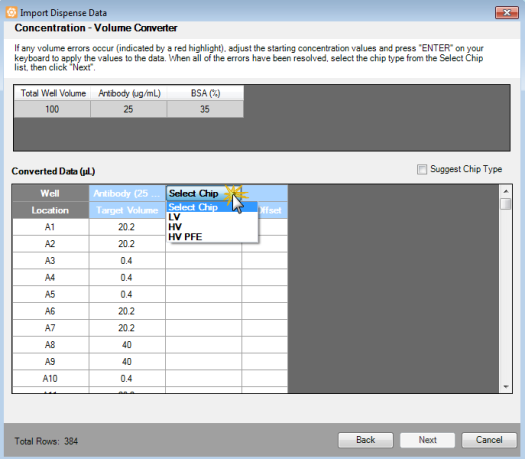
Select Chip Type Options
Note: You can also select the Suggest Chip Type option on the right corner of the Converted Data (μL) panel, which enables TEMPEST to suggest a chip type for each reagent, based on the volume data, while maximizing speed and minimizing error.

Select the Chip Types for Your Reagents
-
Click Next to select chip types for the other reagents and the diluent. When you are done selecting the chip types for all reagents, click Next.
-
To save your settings as a protocol, type a descriptive name in the Protocol Name box. Your new protocol will be added to the TEMPEST Protocol List database, which you can access from the Load button under Options in the Tools menu.
Note: You will not be able to modify a saved protocol from the Import Dispense Data wizard if you re-open it after you close the TEMPEST software. All the choices you made during the import process will be lost, and you will have to start over again.
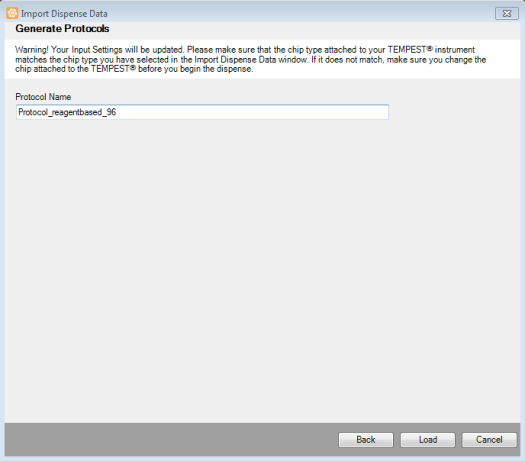
Type the Protocol Name
-
Then, click the Load button to load the data into a Dispense List.
-
OPTIONAL: Go to the File menu, and select Import Dispense Data if you are not satisfied with the way your current experiment was imported. The software will remember the choices you have made during the import process and allow you to modify them as necessary. This option is applicable only if you have not restarted the TEMPEST software.
-
Click the Run Dispense button  .
.
OR
Press F5.
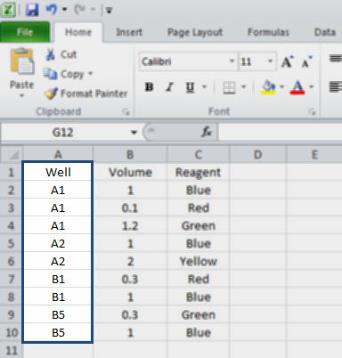
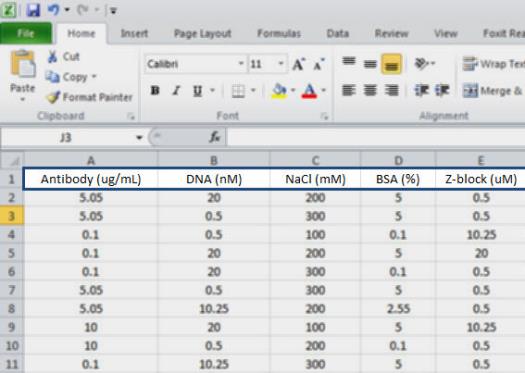
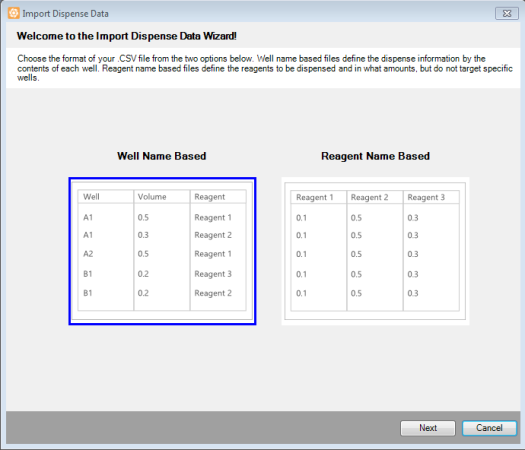
 next to the Input File box and locate the file you want to import.
next to the Input File box and locate the file you want to import.